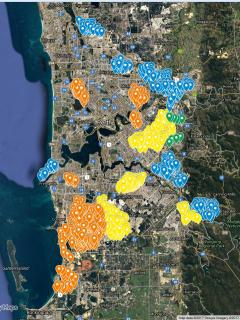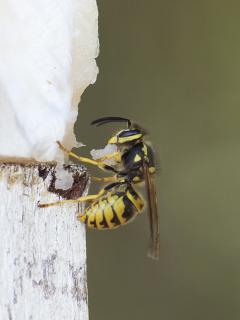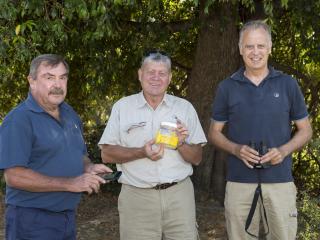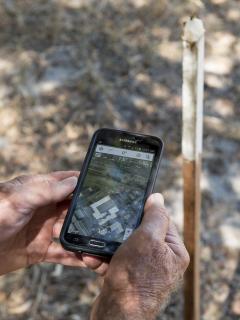The Department of Agriculture and Food has commenced its 40th year of European wasp surveillance and eradication, deploying more than 1000 traps in the Perth metropolitan area this season.
Department senior technical officer Marc Widmer said the European wasp was a declared pest in Western Australia due to its potential to flourish and impact on horticultural industries, outdoor lifestyle and the health of people, pets and livestock.
“The European wasp is considered the world’s worst social wasp and since 1977, we have successfully eradicated incursions and prevented the wasp from establishing in WA,” Mr Widmer said.
“In the 40 intervening years, more than 1000 wasp nests have been detected and destroyed.
“Concentrated efforts so far in the 2016/17 season have seen more than 1100 wasp traps set in the Perth metropolitan region, and some country areas, to help detect the serious pest.
“European wasps caught in surveillance traps alert us to the presence of nearby nests. Fish lures are then used with tracing poles, along with a GPS mobile device app, to help trace wasps back to the nest so it can be destroyed.”
Mr Widmer said in order to ensure early detection and eradication, the department had developed a sophisticated surveillance strategy using global positioning system (GPS) mapping, smart phone triangulation and the department’s existing MyPestGuide Reporting tool.
This year marks the sixth year of the department’s Adopt-a-Trap program, in which local government, industry and members of the public volunteer to manage surveillance traps.
The program involves volunteers from community groups, individual members of the public and local government installing and checking these extra traps, improving the detection and eradication of new nests in WA.
So far 750 adopted traps had been given to volunteers.
Mr Widmer said the location of all department traps, and destroyed nests, were mapped using GPS, providing an image of potential ‘hot spots’ on a customised database.
Adopt-a-Trap participants could also choose to display their traps on the MyPestGuide website.
“The success of the department’s European wasp program is largely a story of collaboration with members of the community, industry and local government,” Mr Widmer said.
“Biosecurity is a shared responsibility and the support of local government and the public is valuable and appreciated.”
Interested people are invited to adopt a trap provided by the department, and regularly set it with a non-toxic protein lure and check it for European wasps.
More information about the ‘Adopt-a-Trap’ initiative is available on the department’s website. Alternatively, freecall the department’s Pest and Disease Information Service (PaDIS) on 1800 084 881 or email info@agric.wa.gov.au.
The European wasp is a scavenger, so if a wasp settles on pet food, fish or other meat products, it should be reported immediately to PaDIS.
Alternatively, photograph a suspect European wasp using the department’s mobile device app, MyPestGuide Reporter, and report it for identification and response.
MyPestGuide Reporter app can be downloaded cost free from the App Store or Google Play.
Fact File
Description
- European wasps have a thick body and are about the same size and shape as a bee. They are a bright lemon-yellow colour with black stripes and yellow legs, and their antennae are entirely black.
- They fly swiftly with their legs tucked up close to their body, and their large nests are usually built into the ground.
Statistics
- 2016/17 – 3 nests found to date, in Welshpool, 17 January
- 2015/16 - 84 nests destroyed by the department
- 2014/15 - 81 nests destroyed by the department
- Average over previous decades – 20-40 nests per year.
The increase in nest numbers is believed to relate to increasing wasp populations in the Eastern States, where they continue to consolidate and expand their range. The queens from those colonies can be accidentally transported into WA to start new colonies.




Media contacts: Jodie Thomson, Dionne Tindale, media liaison +61 (0)8 9368 3937
